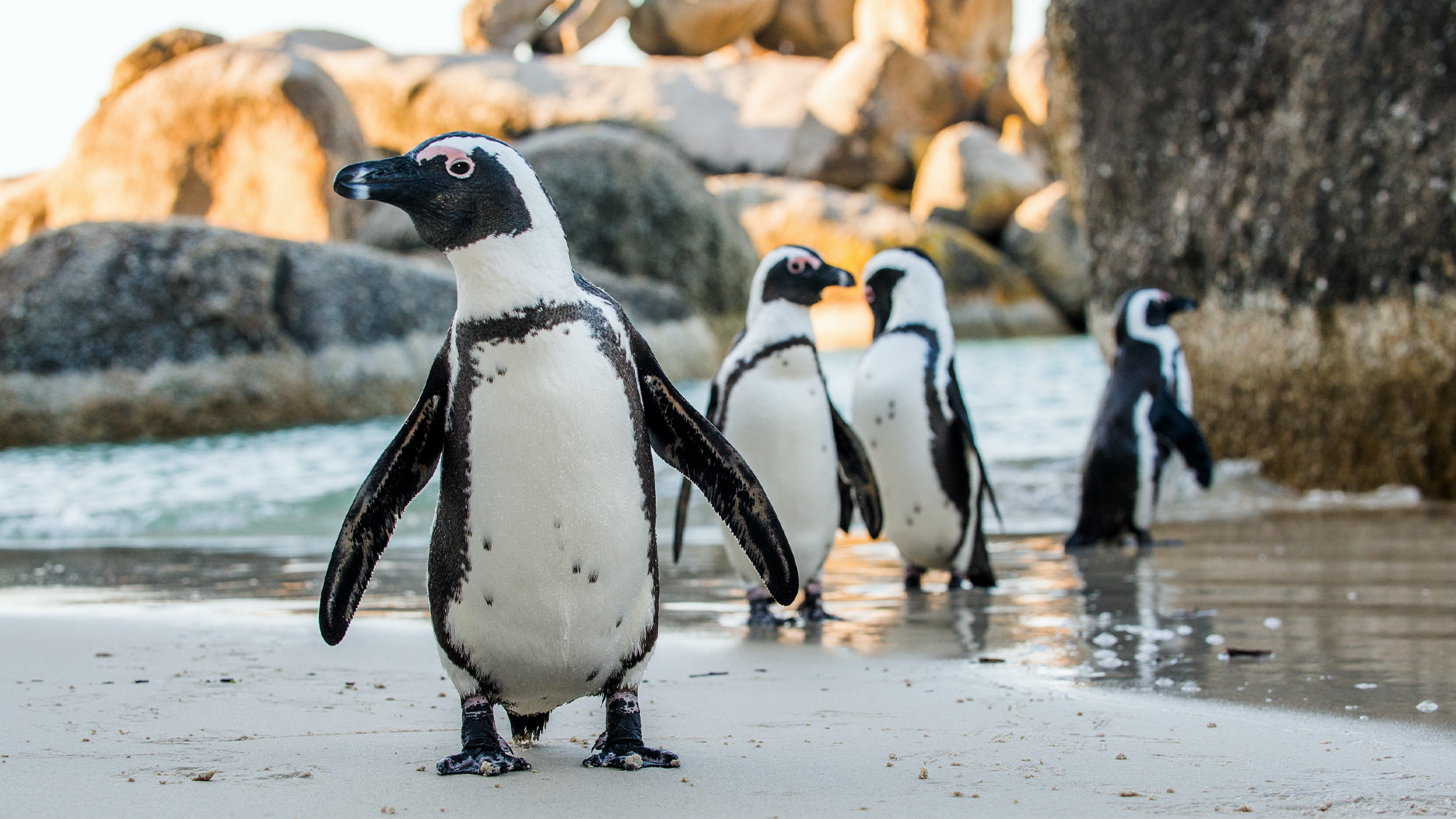
For at least 22,000 years, the African penguin has been struggling to survive because of habitat loss. Scientists are now peering into the past to learn more about why to better help the lovable feathered creatures today and in the future. A study published April 20 in the African Journal of Marine Science paints a paleo-historical picture of where these climate change survivors lived and moved to as the last Ice Age came to a close—and how that changed over time.
According to the study, the African penguin,also called the black-footed penguin, the Cape penguin, or the Jackass penguin, lived on 15 large islands off the coast of southern Africa more than 20,000 years ago. During this period called the Last Glacial Maximum, massive ice sheets dominated a huge portion of the Earth, and it ended about 15 to 20,000 years ago. Upon this climate shift sea levels began to rise as ice melted, effectively sinking the islands. The rising water reduced the suitable nesting habitat for the penguin colonies by tenfold over the next 22,000 years.
[Related: The march of the penguins has a new star: an autonomous robot.]
To help them paint this picture, the team used topographical maps of the ocean floor to find potential former islands that lay 32 to 426 feet below today’s sea levels. Penguins use islands as breeding spots to escape predators on the mainland and also need suitable foraging grounds for sardines and anchovies within about a 12 mile radius.
With the assumption that sea levels were lower during the last Ice Age, the team identified 15 large islands that possibly stood off the southwest coast of Africa, with the largest being about 115 miles long and laying 426 feet below the surface of the sea. When taking the rate of sea level rise over the past 15,000 to 7,000 years into account, they found 220 islands that would have been suitable nesting spots for penguins.
By comparison, some of the largest modern-day islands with penguins off the southwest coast of Africa are Robben Island less than two miles long, Dassen Island less than one mile, and Possession Island also less than a mile long, which all clock in at less than two miles long.
The study estimates that between 6.4 million and 18.8 million individual penguins could have lived among these islands during the Last Glacial Maximum, before the numbers began to plummet.
These changes in habitat availability over the past 22,000 years “could have had a massive effect on penguin populations,” co-author and Stellenbosch University ecologist Heath Beckett said in a statement. “These populations are now experiencing additional human pressures on top of this in the form of climate change, habitat destruction, and competition for food.”
According to Beckett, this new paleo-historical image of penguins all over the islands of southern Africa stands in contrast to the current reality of a post-1900 collapse of the African penguin population. Dassen Island was once teeming with about 1.45 million penguins, but South Africa’s entire African penguin population collapsed to 21,000 breeding pairs by 2011. As of 2019, they dropped even further to 13,600, and roughly 97 percent of the current population in South Africa is supported by seven breeding colonies.
[Related: Ceramic ‘igloos’ could keep African penguins cool and cozy.]
“Changing sea levels would have necessitated the need for multiple relocations of breeding colonies of African penguins on time-scales of centuries, if not even shorter time-scales, and intense competition for breeding space as island habitat became greatly reduced in size,” said Beckett. “This historical flexibility of response provides some leeway for conservation managers to make available suitable breeding space, even in mainland sites, as long as appropriate nesting sites are made available.”
Some further questions brought on by this research surround relocation for the penguins, and analyzing just how much more the species can handle as human pressures continue to rise and food competition heats up.
However, despite the alarming drops in population and their continued struggle, the team points out that these findings highlight the African penguin’s resilience as a species and that this could be leveraged for its conservation and management in an uncertain climate.
“It’s a total survivor and given half a chance, they will hang on,” co-author and Stellenbosch University biologist Guy Midgley concluded in a statement. “Island hopping saved it in the past, they know how to do this.”